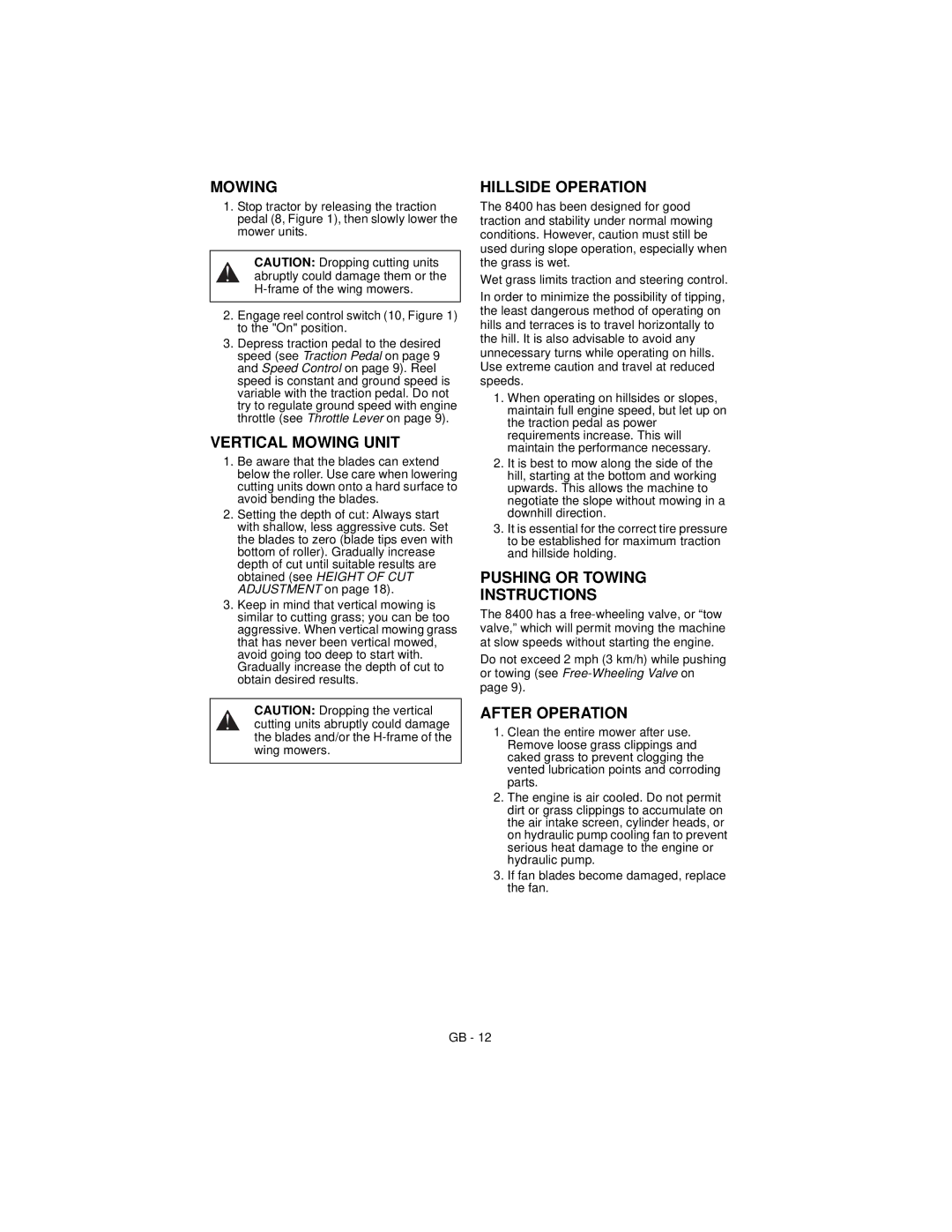99500500-8400 specifications
The National Mower 99500500-8400 is an advanced lawn care solution that epitomizes efficiency and innovation for users who demand high performance from their gardening equipment. Designed for residential and light commercial use, this mower combines state-of-the-art technology with robust features to ensure a seamless mowing experience.One of the standout features of the National Mower 99500500-8400 is its powerful engine. Equipped with a high-output, fuel-efficient engine, this mower delivers consistent power that translates into excellent cutting performance. This ensures that the mower can tackle various grass types and densities, making it useful for both manicured lawns and rugged terrains.
The 99500500-8400 boasts a durable cutting deck made from high-quality materials that resist corrosion and wear. This deck is designed with precision engineering to enhance airflow for optimal grass clipping discharge, resulting in clean, even cuts regardless of lawn conditions. Furthermore, the adjustable cutting height feature allows users to customize the mower’s settings, enabling them to achieve the desired grass length for their specific needs.
In terms of technology, the National Mower incorporates advanced safety measures to enhance user experience. The intuitive safety features include a blade brake that stops the blades within seconds when the operator releases the handle, reducing the risk of accidents. Additionally, the ergonomic handle design ensures comfort during use, allowing for prolonged operation without strain.
Another impressive characteristic of the 99500500-8400 is its ease of maintenance. The mower is engineered for quick blade sharpening and simple access to engine components, making routine upkeep straightforward for users. This is complemented by a lightweight design that enhances maneuverability, allowing users to navigate through tight spots and around obstacles with ease.
Finally, the National Mower 99500500-8400 is designed with environmental sustainability in mind. The fuel-efficient engine minimizes emissions, making it an eco-friendly choice for consumers looking to maintain their lawns without compromising on their commitment to the environment.
In conclusion, the National Mower 99500500-8400 stands out as a reliable, high-performance lawn mower featuring robust power, safety, and user-friendly characteristics ideal for any homeowner or light commercial user. Its blend of innovative technology and practical design makes it a must-have for efficient lawn care.

